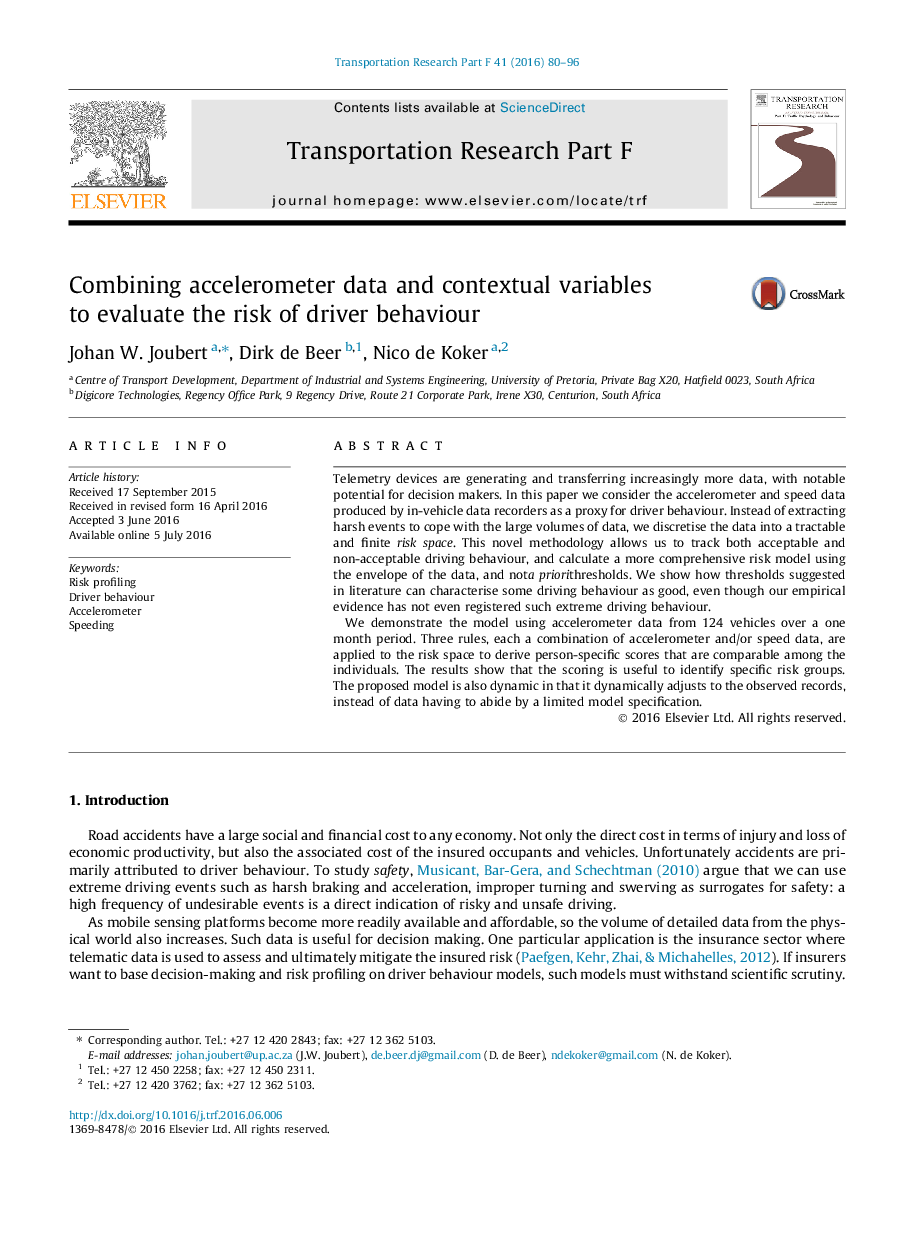| کد مقاله | کد نشریه | سال انتشار | مقاله انگلیسی | نسخه تمام متن |
|---|---|---|---|---|
| 897587 | 915173 | 2016 | 17 صفحه PDF | دانلود رایگان |
• Handling large vehicle telemetry data sets by discretising the accelerometer records into a three-dimensional risk space.
• Flexible and computationally efficient approach to capture both wanted and unwanted driving behaviour.
• More comprehensive and inclusive than dealing with only extreme driving events and a priori thresholds.
• Demonstrate rules/heuristics to convert vehicle dynamics (acceleration and speeding) into a person-specific score.
• Scoring of drivers is a useful proxy for the risk of driving behaviour.
Telemetry devices are generating and transferring increasingly more data, with notable potential for decision makers. In this paper we consider the accelerometer and speed data produced by in-vehicle data recorders as a proxy for driver behaviour. Instead of extracting harsh events to cope with the large volumes of data, we discretise the data into a tractable and finite risk space. This novel methodology allows us to track both acceptable and non-acceptable driving behaviour, and calculate a more comprehensive risk model using the envelope of the data, and nota priorithresholds. We show how thresholds suggested in literature can characterise some driving behaviour as good, even though our empirical evidence has not even registered such extreme driving behaviour.We demonstrate the model using accelerometer data from 124 vehicles over a one month period. Three rules, each a combination of accelerometer and/or speed data, are applied to the risk space to derive person-specific scores that are comparable among the individuals. The results show that the scoring is useful to identify specific risk groups. The proposed model is also dynamic in that it dynamically adjusts to the observed records, instead of data having to abide by a limited model specification.
Figure optionsDownload as PowerPoint slide
Journal: Transportation Research Part F: Traffic Psychology and Behaviour - Volume 41, Part A, August 2016, Pages 80–96
